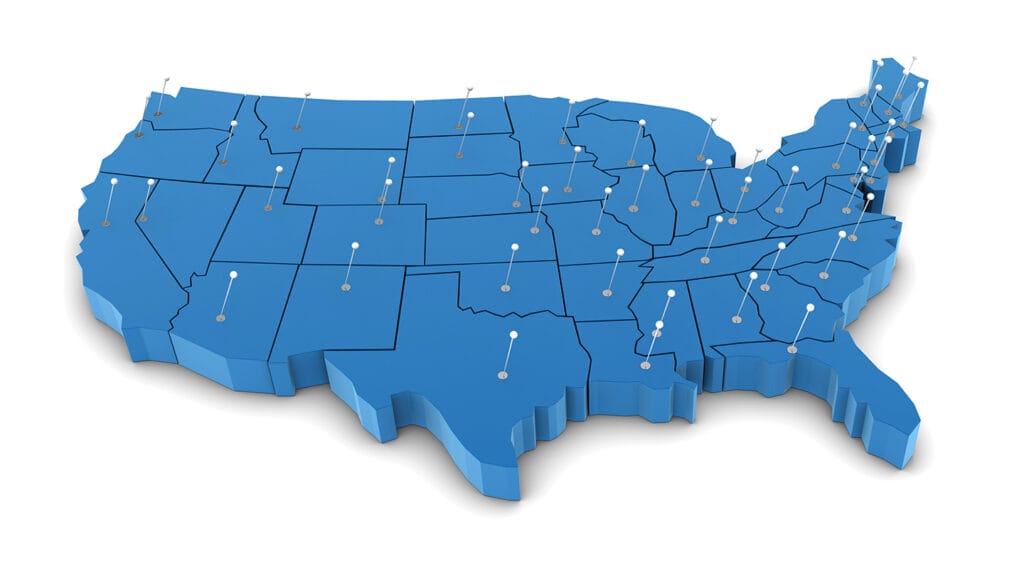
The Centers for Medicare & Medicaid Services on Tuesday presented guidance to states to leverage worker registries to boost beneficiaries’ access to home- and community-based services.
“For too long, American families have struggled to find and afford reliable high-quality care that enables their loved ones to live independently,” Xavier Becerra, secretary of the Department of Health and Human Services, said in a statement. “We are delivering new guidance to states about how direct worker registries can help ensure more individuals receiving Medicaid-covered services can receive care in a setting of their choice.”
The American Rescue Plan Act (ARPA) allocated $37 billion for HCBS. Specifically, the funding provided a temporary 10 percentage point increase to the federal medical assistance percentage (FMAP) for certain Medicaid expenditures for HCBS. The FMAP increase expired on March 31, 2022. Per ARPA, states must use state funds to implement or supplement activities to enhance, expand or strengthen Medicaid HCBS. CMS expects states to expend these funds by March 31, 2025.
States’ primary use of these funds was for workforce recruitment and retention. States spent around $25 billion in this area as of the quarter ending Dec. 31, 2022, according to a document released Tuesday about the ARPA funding allocations. Workforce training was the second-largest area of spending. As of the quarter ending Dec. 31, 2022, states reported $4.3 billion in total planned spending on workforce training Initiatives, the document said. States also spent ARPA funding on quality improvement activities, reducing or eliminating HCBS waiting lists, and expanding use of technology. A lesser funding area was family caregiver training, respite and support, according to the document.
Worker registries as HCBS tool
But in its most recent guidance, CMS encouraged states to explore new ways to bolster their HCBS programs — specifically, through enhanced worker registries.
Worker registries can improve access to care by helping beneficiaries find out who in their state is qualified to provide HCBS and access these providers, according to CMS. The agency made note of “significant federal funding” available through ARPA, which can help states build and maintain these registries.
Evaluating ARPA’s impact
On Tuesday, the White House hosted a panel that included voices from government health agencies, HCBS providers and labor unions. Panel members lauded ARPA’s impact and looked ahead to CMS’ latest undertakings for supporting HCBS.
“This is a family issue. It’s a kitchen table issue. It’s universal,” said Gene Sperling, panel moderator and special adviser to the president of the United States. “There is overwhelming support, not just for this important down payment, but for the long-term sustainable funding for home and community-based care.”
Sen. Bob Casey (D-PA) on Tuesday also lauded ARPA’s impact on home care patients and providers. He advocated for the HCBS Relief Act, which would extend the enhanced FMAP funding, to create guaranteed, sustained investment in the caregiver workforce.
“After three years, it is clear that the American Rescue Plan’s investment in home and community-based services has been a success,” Casey said. “The temporary increase in funding provided by the law has helped to provide tens of thousands of Americans with home care, reducing waitlists and increasing care options while also raising wages for direct care workers.”
Registries were an important part of the conversation. Beyond connecting Medicare and Medicaid beneficiaries with HCBS providers, the registries will show which languages a care provider speaks, their credentials and proficiency in providing specialized care for certain patients like those with dementia or autism, said Neera Tanden, White House domestic policy adviser, during the panel discussion.
“Work registries connect those who need care with those who can provide it, allowing enrollees to find the right caregiver for them,” Tanden noted. “The registries will also help care workers build their client base, learn about new training and other career advancement opportunities.”
In April, CMS issued an executive order mandating CMS issue guidance for states on “ways to use enhanced funding to better connect home- and community-based workers who provide services to Medicaid beneficiaries.”
“Communities need clear links to the qualified professionals best trained to provide that care,” CMS Administrator Chiquita Brooks-LaSure said in a statement made Tuesday. “Helping states build and maintain worker registries will enable more people to find and receive high-quality, affordable, and person-centered care at home and in the community.”
CMS also is planning to issue a final rule on the so-called 80/20 proposed rule, which would require that 80% of Medicaid payments for three HCBS services be spent on direct care worker wages.
This is a developing story. Please check back for updates.



